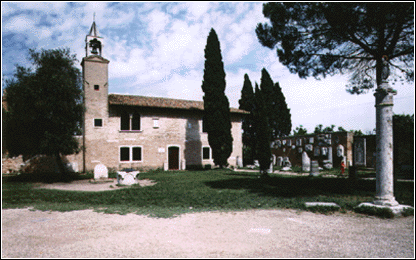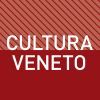
 
If it is easy to reconstruct the history of Torcello from the 7th century to today, the same cannot be said for ancient times. The results of the archaeological inquiries testify connections with nearby Altino which was at that time situated on the coast. The principal roads (via Annia and via Claudia Augusta) were connected with maritime routes through equipped ports; consequently the islands of the lagoon became intermediate landing-places and this lead to a growth in population.The history of Torcello is confirmed by the new findings of Roman-age structures that Plinio, in his descriptions of "Decima Regio" , called "Venetia" before the whole region had assumed this name. Besides, findings in the 70s have shown evidence of Roman-age settlements; so we can conclude that the island was populated well before the arrival the refugees from Altino who apparently chose well-known and populated places of refuge.
In 638 the Catholic bishop of Altino moved to Torcello (perhaps a large part of the city moved there) and in 639 the Basilica of Santa Maria was founded. Torcello developed between the 7th and 10th centuries, thanks to commerce, at first fostered by the salt-mines and then by an ever-widening commercial sphere. During the following centuries the centralisation of all the main productive activities in Venice caused the slow but uncontrollable economical and demographic decadence of Torcello, stressed in 11th century by the growth of marshlands in the lagoon that compromised the healthiness of the area. After this period we find Torcello all but deserted, seat of some convents conserved in part until Napoleon’s suppression, and of few inhabitants, about a hundred, only interested in fishing and farming. The same bishop moved to Murano in the mid 17th century, and remained there until 1818.
The depopulation of Torcello started in 15th century and has continued up to today: in fact today the population can be counted in tens of residents. Thanks to them the Basilica and the Church of S. Fosca were conserved in their medieval form which otherwise would have been reconstructed in renaissance or baroque style as happened with almost all the churches in Venice with the lucky exclusion of S.Mark's. In the little square it is possible to see a beautiful ring-well and the so-called "Attila’s Throne"
        
          
h